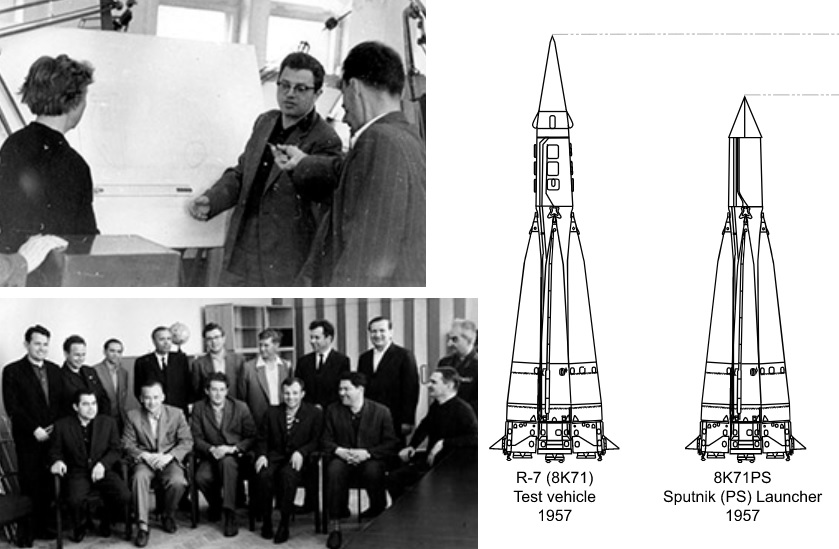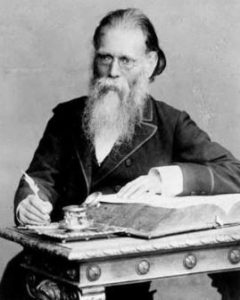The Jew Who Made Space Flight Possible
 Anatoliy Davidovich Daron (1926-2020) was born in Odessa, Ukraine. An avid pianist, he initially wished to become a musician. At age 12, he read a book about space and was inspired to become a rocket scientist, with the hopes of one day flying to Mars. That same year, World War II broke out and the family fled to Russia’s Stavropol region. A few years later, the Nazi invasion came to his town just as he was graduating high school—he got his diploma, written by the principal on a scrap piece of paper, while everyone was fleeing! Doron went on to study rocketry in Moscow, and soon joined OKB-456, the Soviet state institution tasked with missile and rocket development, under the leadership of Valentin Glushko. There, Daron worked on the USSR’s first intercontinental ballistic missiles (ICBMs). When the anti-Semitic Doctor’s Plot hit, Daron lost his job because he was Jewish. Thankfully, Stalin was soon out of the way, and Daron returned to his previous position. Daron’s team of engineers proposed that they could put a satellite in space using rockets similar to the ICBMs. They began working on the designs, but encountered serious problems. Then, while lying ill in bed with a high fever, Daron had an idea. It was the breakthrough the engineers were looking for, and ended up putting Sputnik, humanity’s first artificial satellite, in space in 1957. Historians mark this moment as the birth of the “Space Age”. It was in response to this event that the US government formed NASA (as well as what became DARPA). Not surprisingly, Daron became a Soviet hero and his family was moved out of their cramped one-bedroom, shared apartment to their own two-bedroom suite, together with a state-provided car and television. Daron continued to work for the Soviet space agency, and played a key role in making Yuri Gagarin the first human in space. He was the lead designer on the R-7, R-9, and UR-700 rockets, among others. All in all, he worked as a rocket scientist for more than 50 years, authored some 300 articles and patents, and was awarded the Order of Lenin. In 1998, Daron moved to the United States and spent the rest of his life there. When he passed away last year, he was described as one of the most important “unwritten figures in the history of space.”
Anatoliy Davidovich Daron (1926-2020) was born in Odessa, Ukraine. An avid pianist, he initially wished to become a musician. At age 12, he read a book about space and was inspired to become a rocket scientist, with the hopes of one day flying to Mars. That same year, World War II broke out and the family fled to Russia’s Stavropol region. A few years later, the Nazi invasion came to his town just as he was graduating high school—he got his diploma, written by the principal on a scrap piece of paper, while everyone was fleeing! Doron went on to study rocketry in Moscow, and soon joined OKB-456, the Soviet state institution tasked with missile and rocket development, under the leadership of Valentin Glushko. There, Daron worked on the USSR’s first intercontinental ballistic missiles (ICBMs). When the anti-Semitic Doctor’s Plot hit, Daron lost his job because he was Jewish. Thankfully, Stalin was soon out of the way, and Daron returned to his previous position. Daron’s team of engineers proposed that they could put a satellite in space using rockets similar to the ICBMs. They began working on the designs, but encountered serious problems. Then, while lying ill in bed with a high fever, Daron had an idea. It was the breakthrough the engineers were looking for, and ended up putting Sputnik, humanity’s first artificial satellite, in space in 1957. Historians mark this moment as the birth of the “Space Age”. It was in response to this event that the US government formed NASA (as well as what became DARPA). Not surprisingly, Daron became a Soviet hero and his family was moved out of their cramped one-bedroom, shared apartment to their own two-bedroom suite, together with a state-provided car and television. Daron continued to work for the Soviet space agency, and played a key role in making Yuri Gagarin the first human in space. He was the lead designer on the R-7, R-9, and UR-700 rockets, among others. All in all, he worked as a rocket scientist for more than 50 years, authored some 300 articles and patents, and was awarded the Order of Lenin. In 1998, Daron moved to the United States and spent the rest of his life there. When he passed away last year, he was described as one of the most important “unwritten figures in the history of space.”
Words of the Week
The Palestinians are always coming here and saying to me, ‘You expelled the French and the Americans. How do we expel the Jews?’ I tell them that the French went back to France and the Americans to America. But the Jews have nowhere to go. You will not expel them.
– Vo Nguyen Giap, infamous Vietnamese general

Top left: Daron in the design room. Bottom left: The team that put the first man in space – Yuri Gagarin, sitting third from right, Daron standing, centre. (Image Source)

 Yonah Yosipovich Leibensohn Kremenezky (1850-1934) was born in Odessa, Ukraine to a Russian-Jewish family. He studied electrical engineering and worked on designing Russia’s first railways. In 1874, Kremenezky moved to Berlin to further his studies at the city’s Technical University. He then got a job working for Siemens, and was sent across Europe to build the continent’s first street lighting systems, starting in Paris and ending up in Vienna in 1878, where he settled permanently. Two years later, Kremenezky founded his own factory that produced lamps and batteries—the first of its kind in the Austro-Hungarian Empire. By 1883, he had become very well-known as a scientist-industrialist (a European Edison), and Crown Prince Rudolf personally asked him to help “electrify” his empire. Kremenezky did just that, laying electrical cables and setting up lighting systems, as well as building the empire’s first power plant. Meanwhile, his lamp factory designed all sorts of new lights, including ornamental bulbs and what we now know as “Christmas lights”. Kremenezky lights were a huge hit, exported around the world, even to the United States. For playing a key role in rebuilding and repowering Vienna after World War I, Kremenezky was awarded with the Ehrenbürgerrecht, the city’s highest decoration for citizens (a street in Vienna was named after him, too). Meanwhile, back in 1896, Kremenezky had met
Yonah Yosipovich Leibensohn Kremenezky (1850-1934) was born in Odessa, Ukraine to a Russian-Jewish family. He studied electrical engineering and worked on designing Russia’s first railways. In 1874, Kremenezky moved to Berlin to further his studies at the city’s Technical University. He then got a job working for Siemens, and was sent across Europe to build the continent’s first street lighting systems, starting in Paris and ending up in Vienna in 1878, where he settled permanently. Two years later, Kremenezky founded his own factory that produced lamps and batteries—the first of its kind in the Austro-Hungarian Empire. By 1883, he had become very well-known as a scientist-industrialist (a European Edison), and Crown Prince Rudolf personally asked him to help “electrify” his empire. Kremenezky did just that, laying electrical cables and setting up lighting systems, as well as building the empire’s first power plant. Meanwhile, his lamp factory designed all sorts of new lights, including ornamental bulbs and what we now know as “Christmas lights”. Kremenezky lights were a huge hit, exported around the world, even to the United States. For playing a key role in rebuilding and repowering Vienna after World War I, Kremenezky was awarded with the Ehrenbürgerrecht, the city’s highest decoration for citizens (a street in Vienna was named after him, too). Meanwhile, back in 1896, Kremenezky had met 